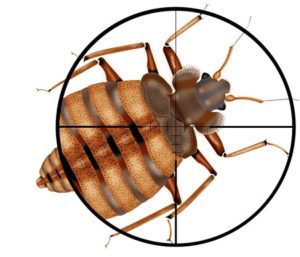Bed bugs are creepy, itchy, nasty, and the bed bug problem in your property is extremely uncomfortable. Bed bugs are masters in sneaking in and hiding in places that are beyond human reach. They can scout in your property, stay hidden, and yet feast on you every night. Since they are nocturnal critters, detecting them becomes difficult, and by the time we find them, the infestation becomes out of control.
To make things easier for the untrained eye, we have listed out 5 warning signs that indicate a bed bug problem in your property.
So, if you;
- suspect bed bugs in your premises,
- want to know about the early signs to stay prepared,
- just curious to know about bed bugs,
Then keep scrolling!
1. Bite Pattern
One prominent hallmark of a bed bug infestation is waking up with bites with a very distinctive pattern on your skin. Bug bites create red, small, itchy bumps that are different from the bites of other insects, such as fleas or mosquitoes.
2. Musty Odor
A strong, musty odor is another symptom of a bed bug problem. Bed bugs release pheromones that give an unpleasant smell, and when the population is huge, and the infestation is severe, the smell can become quite strong. So, if any room in your property smells like a dirty locker room or a wet towel, inspect your home thoroughly for bed bugs.
3. Bloodstains
If you have bed bugs on your bed, they will feed on you while you are asleep. You may also squash a bug while unconsciously during the night. This will result in a bloody polka dots pattern on your bed linen, pajamas, or your skin. If you wake up with your sheets sprayed with blood, it may signal a bed bug problem.
4. Fecal Stains
Check for dark, rust-colored spots on your walls or mattress. Bed bugs tend to leave their fecal stains on wherever they assemble. These spots have an unpleasant odor and get smeared when touched. If you find dark spots on your bed sheets or mattress, the possibility of bed bugs is high.
5. White Spots
If you notice white small spots in your furniture joints or the dimples of your mattress, suspect an infestation and inspect the rest of your stuff immediately. You may use a flashlight to check between cushions and behind headboards. You can also peel the fabric stapled to the bottom of your chairs if deemed necessary.
Wrapping Up
As it is clear that, we may remain uninformed about a bed bug infestation in our premises. Learning about early warning signs is a sure-fire way to know if bed bugs are camping on your property. This will help you to handle the infestation before it gets serious. However, in case of a serious infestation, hire professional pest control services immediately to tackle them safely and efficiently. Contact us today for a bed bug control estimate!





